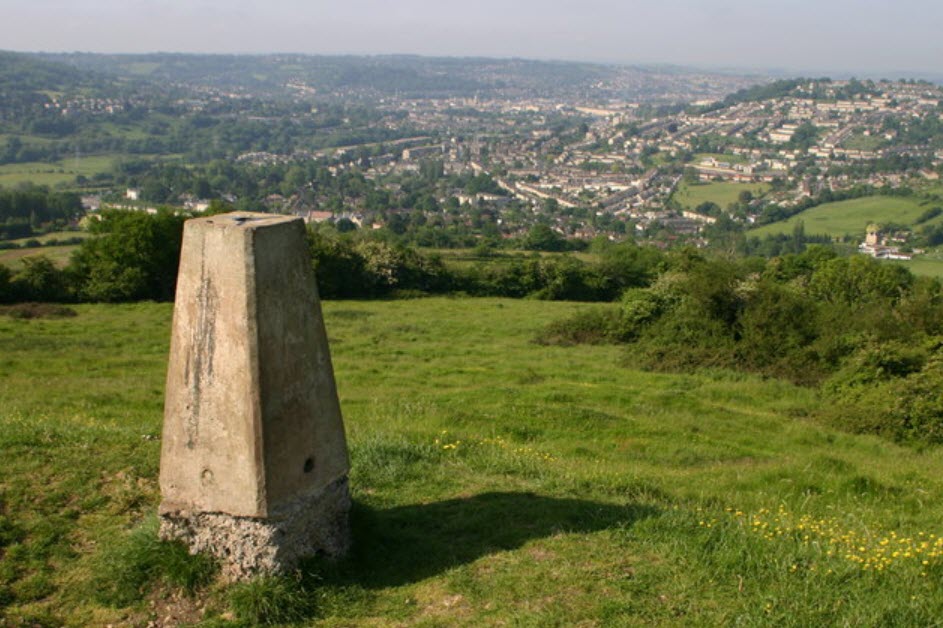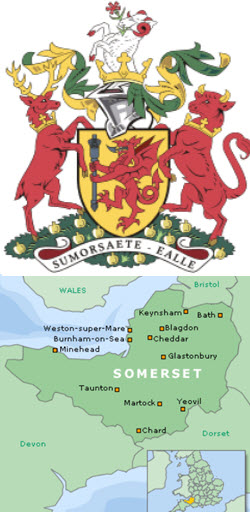Contents
Little Solsbury Hill, also known as just Solsbury Hill, is a small flat-topped hill and the site of an Iron Age hill fort in Somerset, England. It rises to 191 metres above the River Avon, which flows just 2 km to the south. From the Little Solsbury Hill, visitors can enjoy a great view of Bath, Batheaston and parts of the Cotswold Area of Outstanding Natural Beauty.
Solsbury Hill, a prominent landmark located near the city of Bath in Somerset, England, is a site of rich historical significance and natural beauty. This small flat-topped hill, rising gracefully above the English countryside, has become a symbol not only of the ancient past but also of its cultural impact, most notably through music.
Solsbury Hill stands as a testament to the enduring connection between the landscape and human history, culture, and creativity. From its origins as an ancient hill fort to its influence on modern music, Solsbury Hill remains a symbolic beacon, inviting exploration and contemplation. Whether drawn by its historical significance, natural beauty, or musical legacy, a visit to Solsbury Hill offers a unique and enriching experience amidst the enchanting English countryside.
This article explores Solsbury Hill’s historical background, its natural attributes, and its lasting influence on popular culture.

History
Ancient Fortifications
Solsbury Hill is the site of an Iron Age hill fort, dating back to around 300-100 BC. The remains of this ancient fortification, including earthworks and ditches, are still visible today, offering a glimpse into the prehistoric past. These ancient structures underscore the strategic importance of Solsbury Hill, providing panoramic views of the surrounding area and the River Avon valley.
Battle of Mount Badon
Some historians and scholars speculate that Solsbury Hill may have been the location of the legendary Battle of Mount Badon. This battle, said to have taken place in the late 5th or early 6th century, is associated with the victory of the Britons over the invading Saxons. The hill’s strategic location lends credence to this theory, though the exact site of the battle remains a subject of debate.
Quarry
Part of Solsbury Hill was quarried in the 1800s.
The National Trust
Solsbury Hill was acquired by teh National Trust in 1930.
Protest
During protests against the widening o the A46 in 1994, a small turf labyrinth was cut into the turf by protesters.
Why is it called Solsbury Hill?
The origins of the name remains unclear, but there could be a link to the Celtic god Sulis, who was worshipped at the thermal spring in nearby Bath.
Natural beauty and wildlife
Solsbury Hill is part of the Cotswolds Area of Outstanding Natural Beauty, renowned for its rolling hills, verdant valleys, and picturesque landscapes. The hill itself is a popular destination for walkers and nature enthusiasts, offering well-marked trails that lead to its summit. The ascent rewards visitors with breathtaking views of the city of Bath, the River Avon, and the surrounding countryside.
The area is a habitat for a diverse range of flora and fauna. The grasslands on the hill support a variety of wildflowers, insects, and birds, making it an excellent spot for wildlife observation and photography.
Cultural impact: “Solsbury Hill” by Peter Gabriel
Internationally, Solsbury Hill is perhaps best known in popular culture through the song of the same name by Peter Gabriel. Released in 1977, “Solsbury Hill” was Gabriel’s debut single as a solo artist after leaving the band Genesis. The song features distinctive 7/4 time signature and has become one of Gabriel’s most beloved tracks.
The lyrics of “Solsbury Hill” are widely interpreted as reflecting Gabriel’s decision to leave Genesis and embark on a solo career. The song’s uplifting melody and introspective lyrics capture a sense of liberation and the pursuit of personal fulfillment. Gabriel himself has mentioned that the song was inspired by a spiritual experience he had on Solsbury Hill, making the site deeply personal and significant in his artistic journey.
Visiting Solsbury Hill
Today, Solsbury Hill continues to attract visitors not only for its historical and natural appeal but also as a place of inspiration and reflection. The hill is accessible to the public, with paths leading from the nearby village of Batheaston. Visitors are encouraged to respect the natural environment and the historical significance of the site during their visit.
When you are planing your visit, make sure not to mix-up Solsbury with Salisbury. The names Solsbury (the hill) and Salisbury (a city 50 km from Bath, and also the name of the plateu Salisbury Plain) can sound very similar in speech, especially in dialects where Salisbury is pronounced more like Saulsbury. Therefore, there are sometimes mix-ups, and you might even finds some texts where the hill is referred to as Salisbury Hill or Solisbury Hill instead of Solsbury Hill.
The Limestone Link footpath
The village Batheaston is on the route of the Limestone Link, a 36 miles (58 km) long foothpath that runs from Mendip Hills in Somerset to Cold Aston in the Cotswolds in Gloucestershire. Many of those who walk this path take a detour at Batheaston to visit the nearby Solsbury Hill.
The Limestone Link footpath is marked with signs showing the image of a fossilized ammonite; a type of extinct spiral shelled cephalopod.
If you are looking for an even longer walk, the Limestone Link connects with both the Mendip Way and the Cotswold Way.

